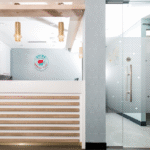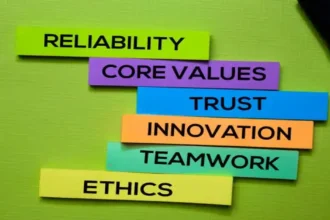Introduction: When Calling Collides With Chronic Fatigue
Emails at sunrise, meetings after dinner, ministry on weekends—many believers operate at breakneck speed until their faith feels more like a spreadsheet than a source of life. If your calendar is packed yet your spirit feels parched, you’re not alone. Scripture says, “Come to Me … and I will give you rest” (Matthew 11:28), but how do you experience that promise between conference calls? The answer may be as simple—and powerful—as a pen, paper, and the REST Method, a Bible‑journaling framework tailored for Christian professionals. Integrated with proven Christian burnout self-care strategies, REST turns hurried devotions into a daily refuge.
1. Why Busy Believers Need a Structured Journaling Plan
Burnout thrives on three conditions: constant output, emotional isolation, and spiritual drought. Journaling counters all three by:
- Slowing your mental RPMs—handwriting forces you to think, feel, and pray more deliberately.
- Providing emotional ventilation—a safe page to name fears and frustrations before they explode.
- Embedding Scripture—inking God’s Word into memory so it surfaces under stress.
The REST Method condenses these benefits into a quick, repeatable ritual anyone can fit between tasks.
2. The REST Acronym Explained
Allocate 10–12 minutes; you’ll be surprised how deeply God can meet you in that short window.
| Letter | Action | Example (Psalm 23:2) |
| R — Read & Record | Copy a single verse slowly. | “He makes me lie down in green pastures.” |
| E — Examine Emotions | Identify one current feeling or stressor. | “I feel pressure to hit next quarter’s targets.” |
| S — Surrender & Seek | Hand the burden to God in one honest prayer. | “Jesus, shepherd my schedule and my expectations.” |
| T — Thank & Trust | End with a line of gratitude and faith. | “Thank You for guiding me toward true rest.” |
Consistency transforms REST from a task into muscle memory—your new default response to stress.
3. Gathering a Minimalist Toolkit
Christian professionals often resist new habits because they fear complexity. Keep supplies simple:
- Compact Bible or Bible app you can read anywhere.
- A5 dotted notebook—light, professional, fits in a briefcase.
- Two pens—black for Scripture, blue for reflections (color cues help recall).
- Sticky tabs—flag verses aligned with rest, identity, and peace for rapid access.
If your kit fits in your laptop bag or purse, you’ll never lack opportunity to journal.
4. Selecting Scriptures That Speak to Stress
Target short passages rich in rest imagery and divine provision:
- Rest & Renewal: Matthew 11:28‑30; Isaiah 40:29‑31
- Identity Over Performance: Ephesians 1:3‑8; 1 John 3:1
- Peace Amid Pressure: Philippians 4:6‑7; Psalm 46:10
Reading fewer verses deeply outperforms skimming entire chapters when mental bandwidth is low.
5. Integrating REST With Workplace Rhythms
Here are four Christian burnout self‑care strategies that weave REST into a packed day:
- Commute Anchors – Voice‑record your chosen verse during the drive; transcribe it in your journal once you park.
- Lunch‑Break Reset – Set a 10‑minute calendar alert titled “REST Meeting.” Step away from screens and walk through the acronym.
- Meeting Buffer Moments – Arrive five minutes early to appointments; jot the “E” and “S” steps while waiting for others to join.
- Evening Transition – Before checking personal social media, complete “T—Thank & Trust” to leave workplace stress at God’s feet.
Micro‑moments compound, breaking the all‑or‑nothing trap that derails self‑care.
6. Tracking Progress With a Weekly REST Review
Dedicate a Sunday‑evening spread called “Rest Scorecard” covering:
| Metric | This Week | Next Week Goal |
| REST Sessions Completed | 4 | 5 |
| Average Stress (1‑10) | 7 | 5 |
| Biggest Drain | After‑hours email | Limit email to 30 min daily |
| Best Refill | Walk + worship playlist | Schedule daily walk |
Reviewing tangible data motivates continued practice and highlights where boundaries need strengthening.
7. Bringing Community Into Your Self‑Care Strategy
Isolation accelerates burnout; accountability reverses it. Try:
- REST Partners – Pair with a coworker or small‑group member; text a photo of today’s verse.
- Lunch‑and‑Learn Demo – Teach the REST Method at a team wellness meeting; collective practice normalizes spiritual care at work.
- Family Wind‑Down – Use “T—Thank & Trust” as a bedtime ritual with kids, modeling transparency and faith.
Communal habits transform REST from a private discipline into a culture of grace.
8. When REST Needs Reinforcement
If fatigue lingers, layer additional self‑care:
- Physical Rest – Honor Sabbath; protect 7–8 hours of sleep.
- Professional Boundaries – Negotiate workload, decline nonessential projects, set email curfews.
- Pastoral or Clinical Support – Seek counseling if anxiety or depression persists.
Remember, spiritual practices complement—never replace—holistic health measures.
Conclusion: Let REST Redefine Success
Kingdom success isn’t measured by overtime hours but by obedience and overflow. By practicing the REST Method daily, you invite the Holy Spirit to steady your heart before you start strategy sessions or sermon prep. Pages fill with prayers, stresses yield to surrender, and your life becomes living proof that God still “leads beside quiet waters” in the 24/7 economy.
Tonight, open a fresh page. Copy one verse. Breathe. The Shepherd of your soul stands ready—not to add another task, but to free you from the tyranny of hustle through simple, sacred REST.

















